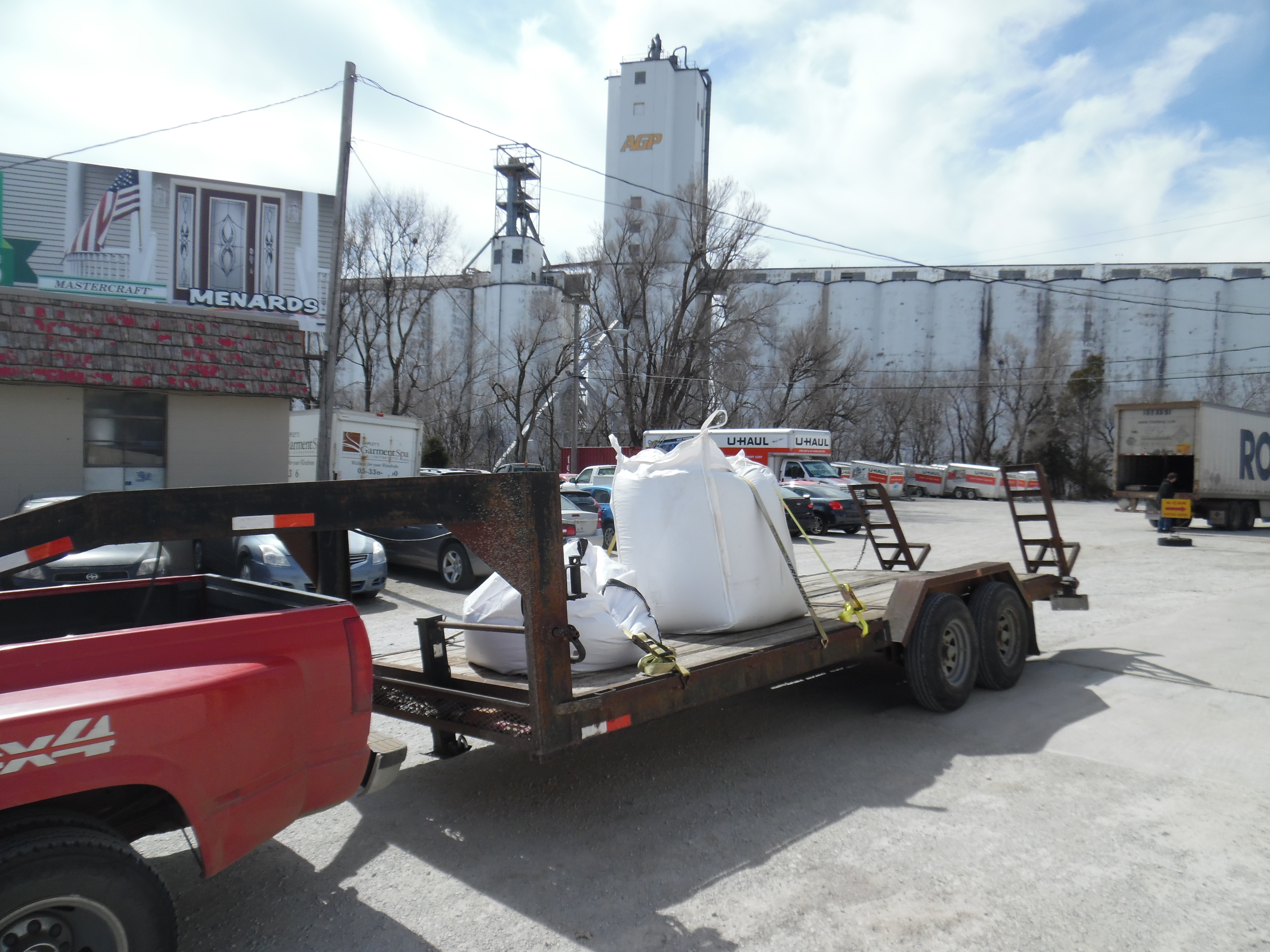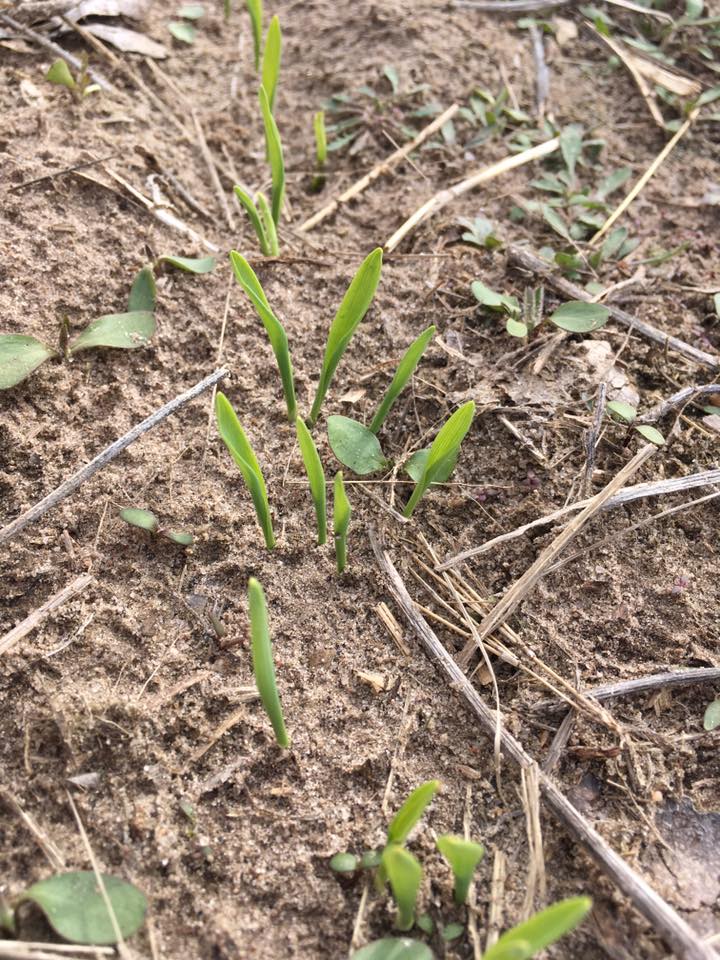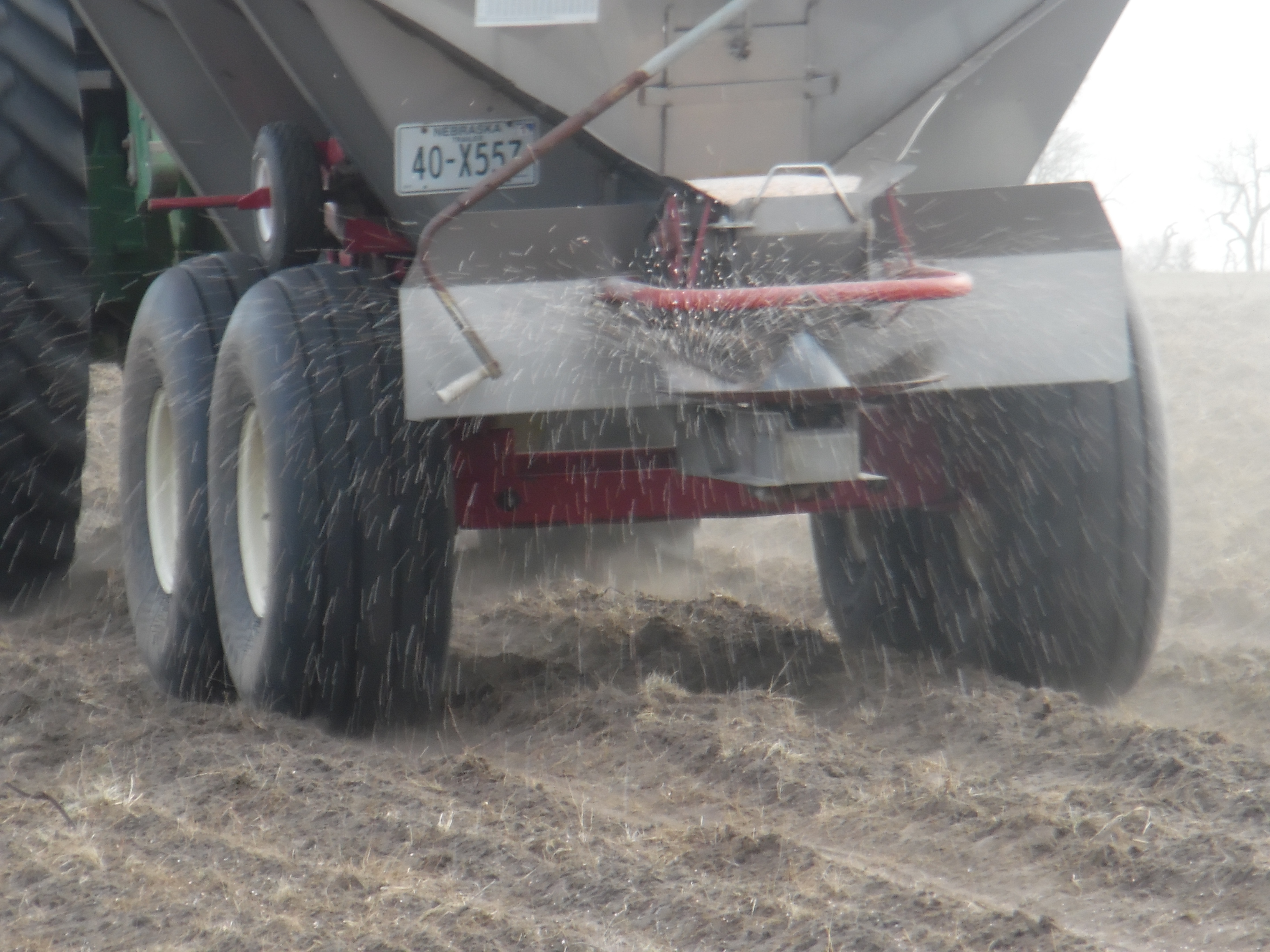Time fly’s when you are having fun. Or so they say! SouthernWind Farm has been extremely busy since I last updated everyone. (almost a month ago!). The end of March and the beginning of April have been a whirl wind, so today’s blog is just going to be an update of everything we have going on.

In mid-March, we partnered with a malting company, Nebraska Malt, out of Lincoln, NE. I know I updated you on the planting of the barley and some of the logistics that go into making beer. I am happy to announce that the barley has come up and is growing beautifully. It doesn’t look as I thought it would, I was picturing a grassy like appearance but it resembles a stalk like corn.
 This was at about a week after it had a emerged. Don’t mind the lovely weeds all around it s in the middle the stalk like stems. We fertilized the barley right after we planted and we received a nice rain just after so our timing couldn’t have been more perfect!
This was at about a week after it had a emerged. Don’t mind the lovely weeds all around it s in the middle the stalk like stems. We fertilized the barley right after we planted and we received a nice rain just after so our timing couldn’t have been more perfect!
 This image is the barley at 3 weeks after if emerged! Lush and green and the rows look pretty clean! We are super excited and hopeful for a great crop. Eventually, we will have to do a fungicide application and probably some type of weed control to ensure the barley has a fighting chance.
This image is the barley at 3 weeks after if emerged! Lush and green and the rows look pretty clean! We are super excited and hopeful for a great crop. Eventually, we will have to do a fungicide application and probably some type of weed control to ensure the barley has a fighting chance.
Our next task came by way of rejuvenating the hay meadow, again I posted about turning our hay meadow from a native pasture to a more improved pasture by planting timothy grass, orchard grass, and white clover.

After the plowing, disking, and packing the ground; my husband fertilized in hopes of the grass seed flourishing in what was less than desirably soil. He took a spreader that we rented from our local coop and applied the formulation of desired minerals. About a week later, we had some nice warm days to drill in the grass seed, Timothy grass, Orchard grass, and white clover.
Now in between the fertilizing of the a hay meadow and drilling seed we had a little down time (ha); we had been looking for a hay baler. My father had both a small square baler, that he bought sometime in the late 80s, and a hay loafer. The hay loafer, for those of you that haven’t seen one in action, packs the hay and forms it into a very large almost bread loaf shape before it spits it out on the ground. Sadly, both of these implements had seen better days and were no longer serviceable. So we began the hunt for a round hay baler, luckily it didn’t take long we found one in North Dakota.
 Now we know that it’s not new, but for the price and condition we felt like we got a good deal. We will be using this baler a lot this year; barley straw bales, wheat straw bales, prairie hay bales, alfalfa bales, and our timothy/orchard/white clover bales. She will be getting a workout. We have yet to do a final check over all of her parts but as we don’t start the hay seasons for a couple of months we have some time. WHEW!
Now we know that it’s not new, but for the price and condition we felt like we got a good deal. We will be using this baler a lot this year; barley straw bales, wheat straw bales, prairie hay bales, alfalfa bales, and our timothy/orchard/white clover bales. She will be getting a workout. We have yet to do a final check over all of her parts but as we don’t start the hay seasons for a couple of months we have some time. WHEW!

After drilling the hay meadow, we have a few weeks before we start planting field corn. We can officially begin April 15 with corn planting, but as it is supposed to rain here most of Easter weekend it doesn’t look like that is going to happen. While my husband has been busy with field work, I have been busy with the livestock. April 3 chicks arrived from the hatchery, aren’t they adorable! These will be my new laying hens. 
“Say what, you’re getting rid of us?!” Not yet. My older hens just turned a year old and while they probably have a few more years in them I realize eventually they will stop laying. So I decided to raise up a few (15 to be eggxact…see what I did there) to take over. I may have went a little overboard with breeds, Speckled Sussex, White Rocks, Silver Laced Wyandottes, Light Brahmas, Partridge Cochin, Australorp, Dominiques, and Buff Orpingtons. The hatchery threw in one free exotic chick which turned out to be a Silver Laced Polish chicken. Of course, they have names!
Well I had best be on my way and fly the coop (haha)! I will update again much sooner this time. If you want to watch my husband in action we have a youtube feed, southernwind farm. Also drop us a line if you have any questions or comments!




Recent Comments